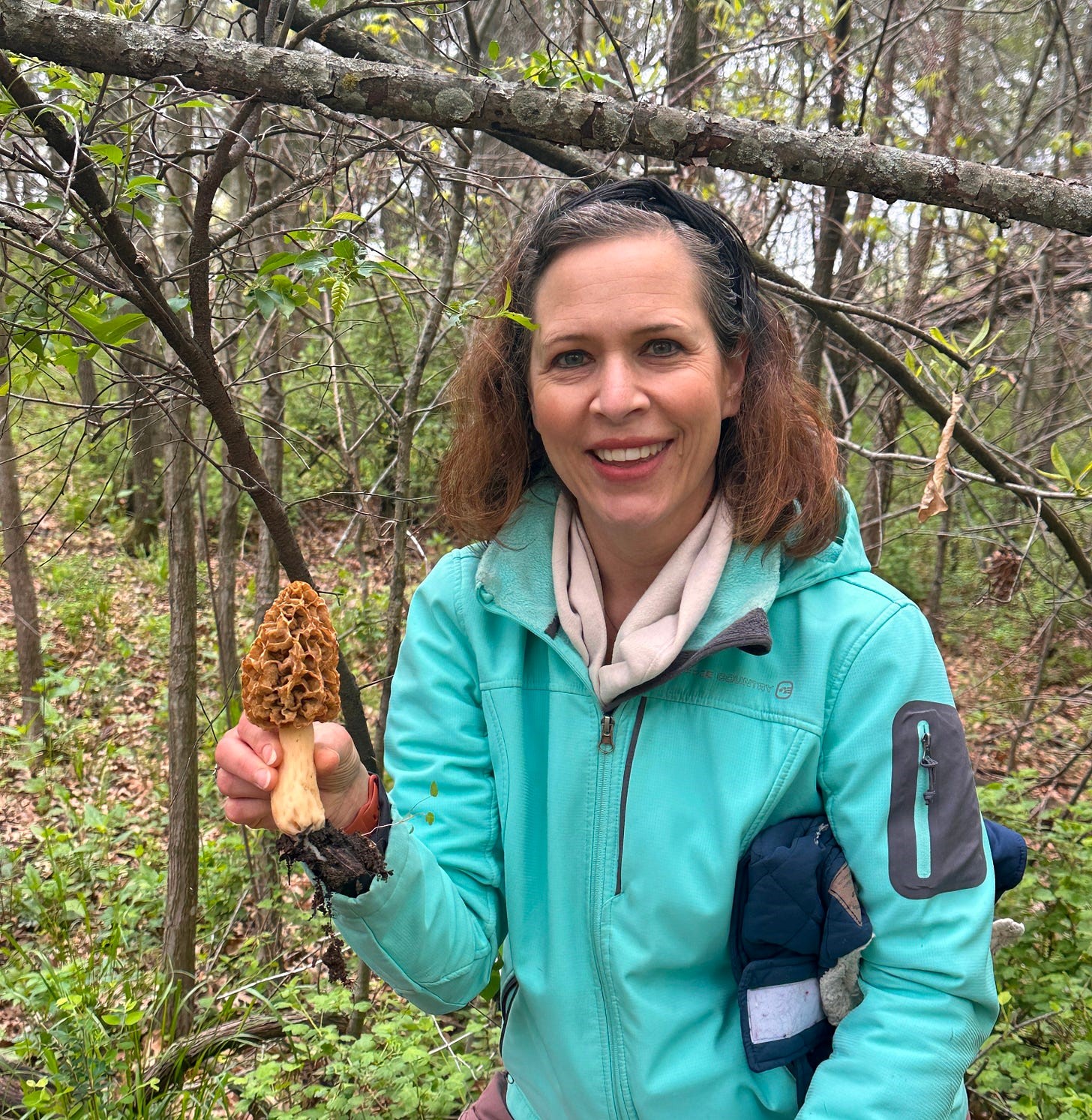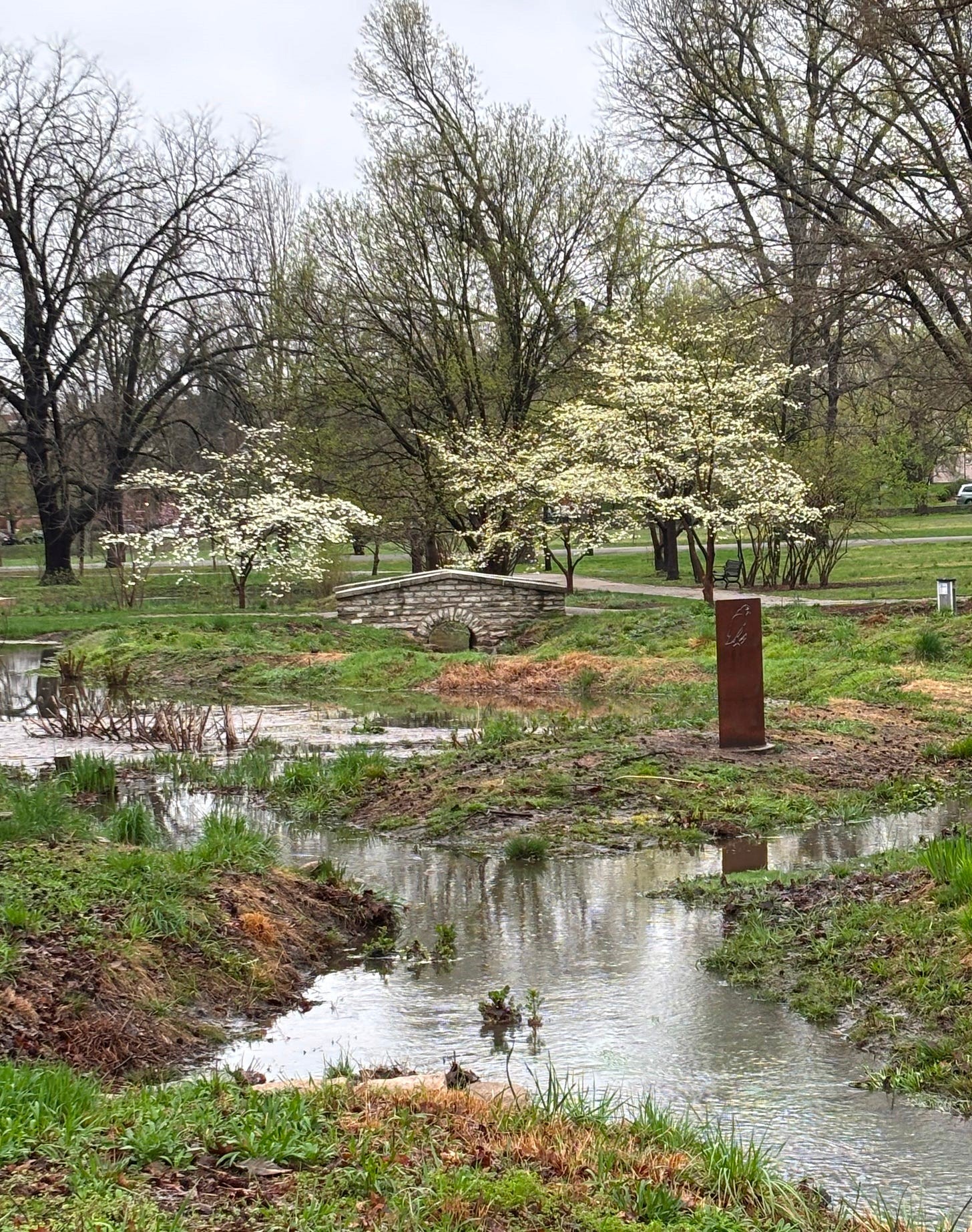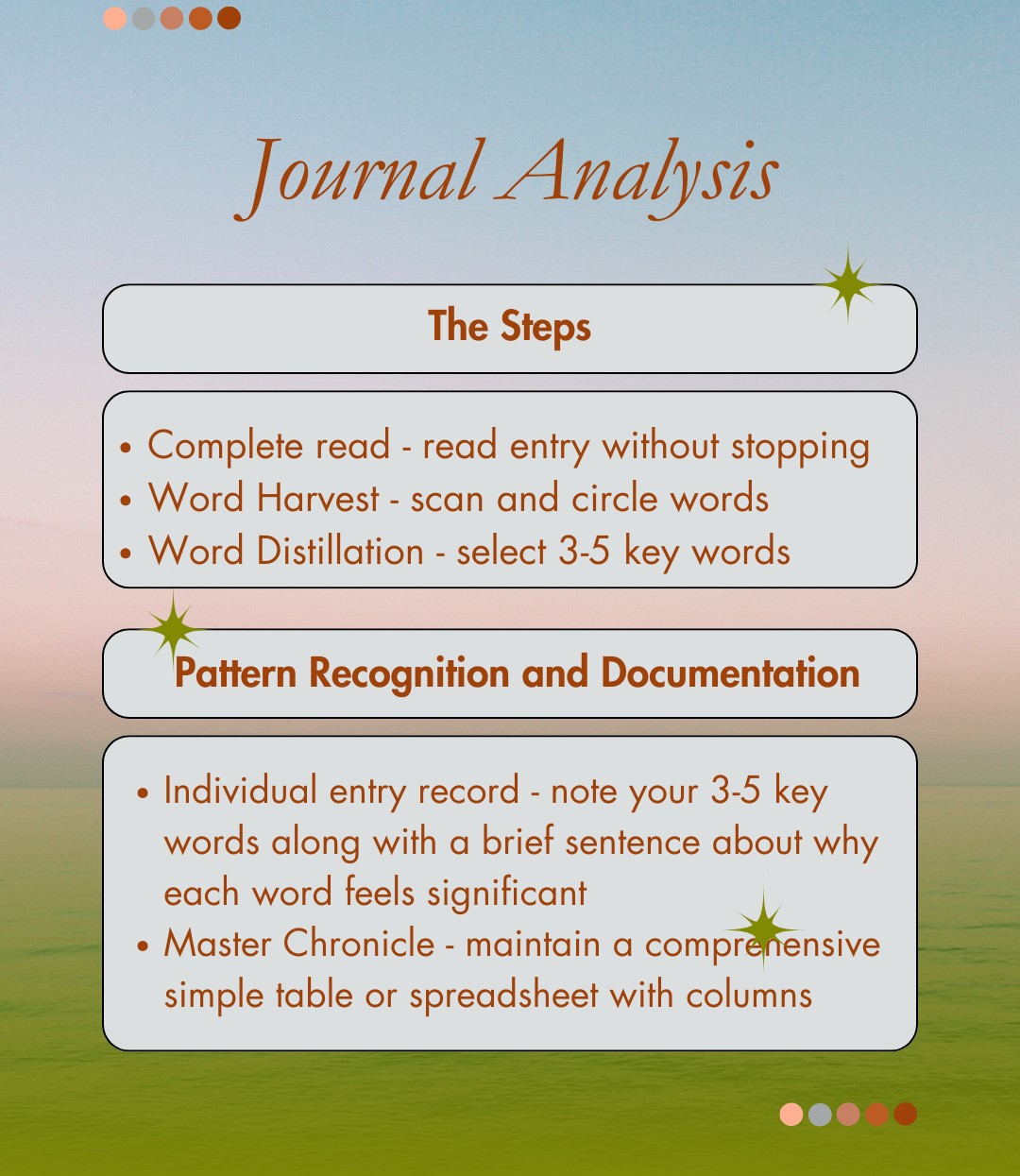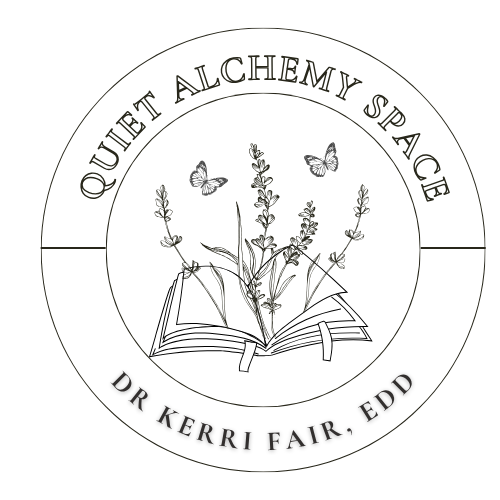
What activities once brought you joy or fulfillment that have quietly slipped away during these past few years? Which one calls to you to be reclaimed, if any, and why?
By choice, and without bitterness for many years, my personal joy was scheduled in bits and pieces over the course of a week. However, the hour or two during nap time on the weekends was a luxury I indulged in; coveted and protected. One weekend at a time, longer projects slowly took shape and, at the end of each nap time, I was refreshed just as my littles were re-energized. This was enough for me for a long time as I loved being a mother, a wife, and homeowner. As a new mom at 32, I was living the life I had dreamed about for so many, many years. Much of my joy in those days was rediscovering the joy of life through the eyes of my three children as they explored the world with me.
Maybe it is just part of adult development, but I think from my middle 30s until I started to hit midlife in my early 40s life just passed by. Things happened, of course. Good things. Bad things. But, a lot of things happened that I just can’t remember. The days were so similar and over time the nap times were shorter; then nonexistent. The quiet moments I had for reflection, personal projects, or self-discovery were shifted to late nights after the kids finally went to bed.
The Day 1 prompt invites you to gently reconnect with things that brought you joy in your past, drawing them back into awareness as potential sources of renewal. This exploration connects directly to the “Feel” component of the FACTOR framework, creating space to acknowledge emotions around what’s been lost and what might be reclaimed. By beginning here, we establish that joy isn’t a luxury (as I once thought during nap time) but an essential foundation for resilience through life’s transitions.

The Science Behind Rediscovering Joy
Midlife is often a time of significant change and questioning of one’s path, purpose, and overall satisfaction. Maybe it’s because one day our middle school/teenage children don’t need us as much, go off into their rooms for an hour or longer, and we are left with unexpected and unplanned time to stop and think. What do we discover? Life is moving quickly. We have limited time, but still time to do more for the world and we realize that we have no idea what that might be! Many of us have reached the highest point in our careers, see limited possibilities where we are in life, or find our dream career doesn’t bring us the same sort of joy and fulfillment we once knew. Why?
When our bodies begin to shift in midlife, we undergo neurobiological change, while also feeling the weight of social pressures and (maybe for the first time in our lives) engaging in existential introspection (considering our life’s purpose). Neurobiologists note a decline in dopamine regulation starting in our early or middle 40s which may contribute to shifts in our motivation and engagement. While still viewing ourselves as younger (at least younger than our parents and grandparents) we begin to feel the aging process and, living within a society that values youth, can begin to doubt our self-expression and image (or begin to view it more negatively). We essentially begin to question what we have been too busy to question in our recent years, and it feels unsettling, to say the least.
Though the midlife transition phase “gets a bad rap” with a focus on the phenomenon of the midlife crisis (something I’ll unpack and debunk a bit in a later post), it is actually an opportunity to reflect, revise, and build a life that has more meaning, purpose, and enriched relationships. The relationship we can begin to enrich first is the one with ourselves. When we confront the challenges of this stage of life through self-reflection, redefining personal values, and pursuing meaningful purposes, the results can be hugely positive.

Reflecting on past roles and experiences, particularly those that made you feel you belonged, is a powerful way to guide you forward. These reflections can lead you toward new experiences and practices as you redefine and, in some cases, evolve your identity. As Jonathon Small wrote in a recent post on substack, we’re looking for an “upgrade” instead of a complete “reboot.” Rediscovering what brought you joy and fulfillment can help you unearth the ‘multitude of stories’ that have always lived within you. These complimentary narratives (i.e. your passions, dreams, talents, and unique perspective) may have taken a back seat as society and those around you focused primarily on your roles as mother, wife, daughter, or whatever identity was most dominant in your life up to this point.
Let’s get into the practice!
Photo Curation
Consider the prompt and what comes up for you. When you have some ideas or are ready to explore you can go about the process of curating one to three photos that connect the prompt, in a few ways.
- Take out your phone and snap some photos as ideas come to you. I often walk around my home or just take my phone out while walking, working, or out with the family in case something comes to mind.
- Scroll through your photos on your phone or other storage space where they live and select a few.
- If you have something specific in mind (i.e. golfing) but know that nothing in your home or around you would connect, you can search the internet for images. If you decide to take a screenshot, remember you are doing so for personal reasons and should only keep them in a folder on your computer, in a digital notebook, or on your phone to look at rather than sharing anywhere public. If you do decide to share the image publicly, consider the ethical implications of doing so. Asking the source for permission to share, citing the source, or linking directly to the space you found the image are good practices.
Wherever you store your images, look at them for a bit and, when ready, begin the next step of journaling.
Journaling
Respond to the prompt in a free thinking journal format. Use a familiar notebook, or scrap paper lying around. It will be important to write at least a page so you have enough insights to analyze in the final steps.
Prompt “What activities once brought you joy or fulfillment that have quietly slipped away during these past few years? Which one calls to you to be reclaimed, if any and why?”
Some quotes from my journal:
“When I thought about things from my past, I think I zoomed backward and forward. When I went back to childhood, I remembered a few things, but nearly all weren’t relevant. I think what stood out for me [about that time] was time. I often had loads of time to spend observing nature, walking, and paying attention to the sounds and sights and smells.”
“When I was a new teacher, I was lucky enough to join a full community of educators. We became a family so early and those [dear friends] really helped me build my identity. They helped me grieve after [my fiance] died.”
“Watercoloring is something that faded away, but something I still want to continue. I got pretty good at it [when watching others’ tutorials], but I think I wanted more than to just copy someone else’s work. When I couldn’t make my pictures look like those in my head, I think I lost interest instead of continuing to try.”
Journal Analysis
This is where all the pieces come together beautifully! Before engaging in the following simple practice, designate a place in your journal or find a post-it note to act as your “master chronicle.” I felt it needed a fun and wizard-like name as this is where the magic happens (cheesy, I know). This will you keep the words/phrases that you select as most significant and at the end you try to connect them – almost as a detective.
Analysis Steps:
- Complete Read – Read your journal entry from start to finish without interruption (reading aloud is recommended, followed by an optional silent reading)
- Word Harvest – Scan through the entry and circle any words that feel significant or resonate with you (no limit on how many words you can circle in this step)
- Word Distillation – Review all your circled words and narrow them down to just 3-5 keywords/phrases that feel most meaningful
- Individual Entry Record – For each of your 3-5 key words, write down a brief sentence explaining why that particular word feels significant to you. This step really is optional, but I’ve found when I do it, I remember what I was thinking days later when I selected the words. Otherwise, when I come to the end of a prompt series I struggle to make meaning because my memory doesn’t serve me as well as it did in my 20s!
- Master Chronicle – Keep a simple list of all the keywords or phrases you curate from all three journal entries in this mini series of three. We’ll come back to this at the end.

Scarcity
Experience Fully
“part of”
originality/style
“What brought me joy was taking time to really experience things fully in the moment; a book, gardening, etc. I wanted to embrace the moment to make it my own – have it leave an impression on me. Finally, I both noted the desire to have more time, but having unlimited access [to things] makes me feel like I have to rush when I do have the time. Instead, I should plan a singular focus when I have the luxury of time to indulge.”
What was coming up for me was having enough time (and a singular focus) to basically get engrossed or so lost in something that I actually forgot about time. My personal time is so scheduled that when I have it, I’m already thinking about the scarcity of it, or I get distracted by all the options I have access to to engage with that I can’t make a decision. What ends up happening…very little! My real joy comes from getting lost in the process so I can let go of my worry about time. I’m overscheduling my life, for sure. It’s taking the joy out of much of my day.
Did you work through this process? In the coming days, please use the comment space below to share any questions you have, suggestions for improvement in my posts, or insights you learned about yourself.
Walking this journey with you,
Kerri
Ready to Rediscover Your Forgotten Joys?
If this resonates with you, there’s more to explore together. Subscribe now to receive your complimentary digital workbook and join me on this three-week journey of rediscovery.
The workbook contains all the sketch-stitch-journal prompts, reflection questions, and creative exercises we’ll be exploring. Consider these tools designed to help you unearth those “multitude of stories” waiting to be remembered.
References:
Dreher, J.-C. ., Meyer-Lindenberg, A., Kohn, P., & Berman, K. F. (2008). Age-related changes in midbrain dopaminergic regulation of the human reward system. Proceedings of the National Academy of Sciences, 105(39), 15106–15111. https://doi.org/10.1073/pnas.0802127105



0 Comments